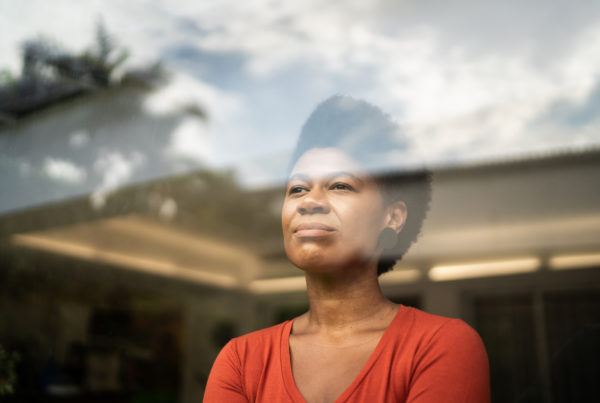
Note: Following our post on “Building a Corporate Culture of Generosity and Engagement,” we will share recent client success stories on this topic. With this first story, we are honored to share HPHCF’s experience demonstrating how corporate philanthropy and employee engagement, when integrated as part of a focused and well-designed strategy, have the power to literally rebuild lives and communities.
A garden is more than vegetables rising from the ground. It transforms anyone caring for it into someone with the power to feed a family fresh food that otherwise might not exist, who can share produce with neighbors, who trades recipes with someone from another culture. An individual, a family, a neighborhood at a time, a garden transforms lives. The work of Harvard Pilgrim Health Care Foundation (HPHCF) also has undergone change over time, and its evolution builds on at least three of the qualities it shares with other successful corporate engagement programs. We spoke with Karen Voci, President of the Foundation, to share how the program was built, and where it is headed next.
1. Leadership at the Highest Levels
Executive leadership and engagement often makes the difference between a program that checks the boxes and one that soars. Soon after September 11, 2001, HPHC empowered every colleague every year to select a local non-profit organization to receive a $500 Community Spirit mini-grant to memorialize those who died in the attacks. Then-CEO (and current Massachusetts Governor) Charlie Baker took it a step further, directing leadership to add a community service component. A Giving and Service team soon established an employee council from across departments to meet over coffee and lunches and decide how to integrate efforts effectively. HPHC agreed to provide paid time off for employees for volunteer time, a commitment that continues now as three days per year: one to volunteer with any organization of choice, one day of service done in partnership with one’s department, and one day together by office location.
“When I started in 2007,” says Voci, “the board of the Foundation also had major changes in mind. Rather than continue with small, multipurpose health grants, the board wanted to deploy the limited resources we had against a huge issue identified by the nation’s Centers for Disease Control and Prevention: childhood obesity.”
With this guidance from and support at the highest levels, HPHC Foundation moved to address the issue not through diet and restriction, but by teaching people life skills around eating better and moving more. In addition to philanthropic support, senior leaders and department heads were encouraged to use HPHC service and giving days to focus on healthy eating and active living.
2. Creative Engagement that Builds Networks
The Foundation soon focused on a simple contributing factor to conditions like childhood obesity: access to fresh, healthy food. Families eat the food they can access, and fresh, healthy food often is less accessible – if available at all – in lower-income neighborhoods. In 2015, the Foundation studied three communities – the Greater Boston, Portland, ME, and Manchester, NH areas – and found nonprofit partners who were seeing positive change and who offered effective ways to track results. The Foundation’s focus narrowed specifically to issues around access to healthy food.
“We wanted to put our shoulders behind the wheel,” says Voci. “We worked with food partners to not just put money in the pool, but to own pieces and create learning opportunities. To understand the territory, we made a number of smaller grants to community gardens. We wanted to meet people who were doing things at the grassroots level, who were getting the attention of policymakers, who were effective in reaching communities directly. We gave $3,000 to $5,000 in grants, expanding opportunities for people to grow their own food.”
Then they went out to talk with people in each community, going beyond the pictures and reports received. Over the years, the team divided up the territory and went to see the impact for themselves.
“We are blown away by the ingenuity, the resilience, and the community generated by working around food,” Voci says. “Recently, for example, a community garden in Brunswick, Maine, in the middle of some senior projects drew in Boy Scouts, Bowdoin College professors, and seniors. They needed a half-time garden manager and we had paid part of her salary. The Scouts built a solar irrigation system out of spare parts that looked like something from NASA. It was incredible.”
According to Voci, a theme repeats itself throughout the team’s updates. New immigrants farm next to old-time New Englanders, young and old, across income levels and races. Even when they don’t speak the same language, gardeners share seeds, knowledge on what to grow and how to grow it, and recipes from their respective cultures. A shared social capital is created.
At the same time, the Foundation extended its reach into communities and to populations without gardening opportunities. Farmers’ markets and Community Supported Agriculture projects, the Foundation realized, didn’t reach low-income families. Those concepts drew summer and weekend people and young professionals, and required transportation and money, even if there were provisions for SNAP benefits. “If you build it, they don’t necessarily come,” as Voci points out, so it was time to make healthy food accessible in the neighborhoods. “If you give a low-income family the same opportunities to pick and choose foods, to buy, cook, eat and feed their families on their terms, they will come back. We asked ourselves, why aren’t we expanding that?” The Foundation then broadened its work on this front, starting by funding a mobile market in Worcester. Just as the gardening program has grown over time, the Foundation now supports a small fleet of mobile markets in partnership with eight organizations it supports in four states
3. Powerful Programs Blend Giving and Volunteers, Local Impact, and Systems Change
As the Foundation worked to replicate the best elements of its work, it continually refined its parameters for multi-year grants, focusing on organizations that grow, glean or distribute food, and that rely on volunteers. In turn, HPHC departments and offices increasingly choose to dedicate their volunteer days specifically to the funded organizations or similar food access programs, and return on their own volunteer days or as individuals on their own time.
It’s been a wake-up call. “Many people don’t understand how problematic the current food system is,” says Voci. “With our work, we are building citizen advocates to bring changes in the food system. We are starting to give funds to support advocacy training. Communities need to decide how to use their own lands, and to recognize the connection between food and land as policies are created at the local and state levels. We’re still in our first years, and the opportunities aren’t just about digging and planting. Our giving reaches maybe $1.6 or $1.7 million in four states, but it’s very strategic and with our employee volunteerism, it becomes much more than that.”
The Foundation has learned a great deal over the past several years, and staff are now exploring and educating colleagues around food policy on a regional and even national level. For example, they’ve provided funding to the Winter Institute of The Food Project, supporting training on youth development and sustainable agriculture models, food justice initiatives, and how to create more food secure communities. The Food Project draws on volunteer teams to build gardens. One young single mother with a novice’s gardening skills described getting her garden as the most empowering thing that has ever happened to her, empowering her to do more than put food on the table, but to create healthy, fresh food alongside her children, improving their health and increasing ownership of their own lives. Stories like those inspire Voci, the leadership of Harvard Pilgrim Health Care, and her colleagues at all levels across the region.
“Each individual program we support with our money and time isn’t a big fix, and what we do in total isn’t either. But we do know we are making positive change for people in these communities, and for the communities themselves, and we are each learning and growing as part of this change. We are going to keep going until someone figures out how to fix the system, and we’re going to be part of that, too.”


